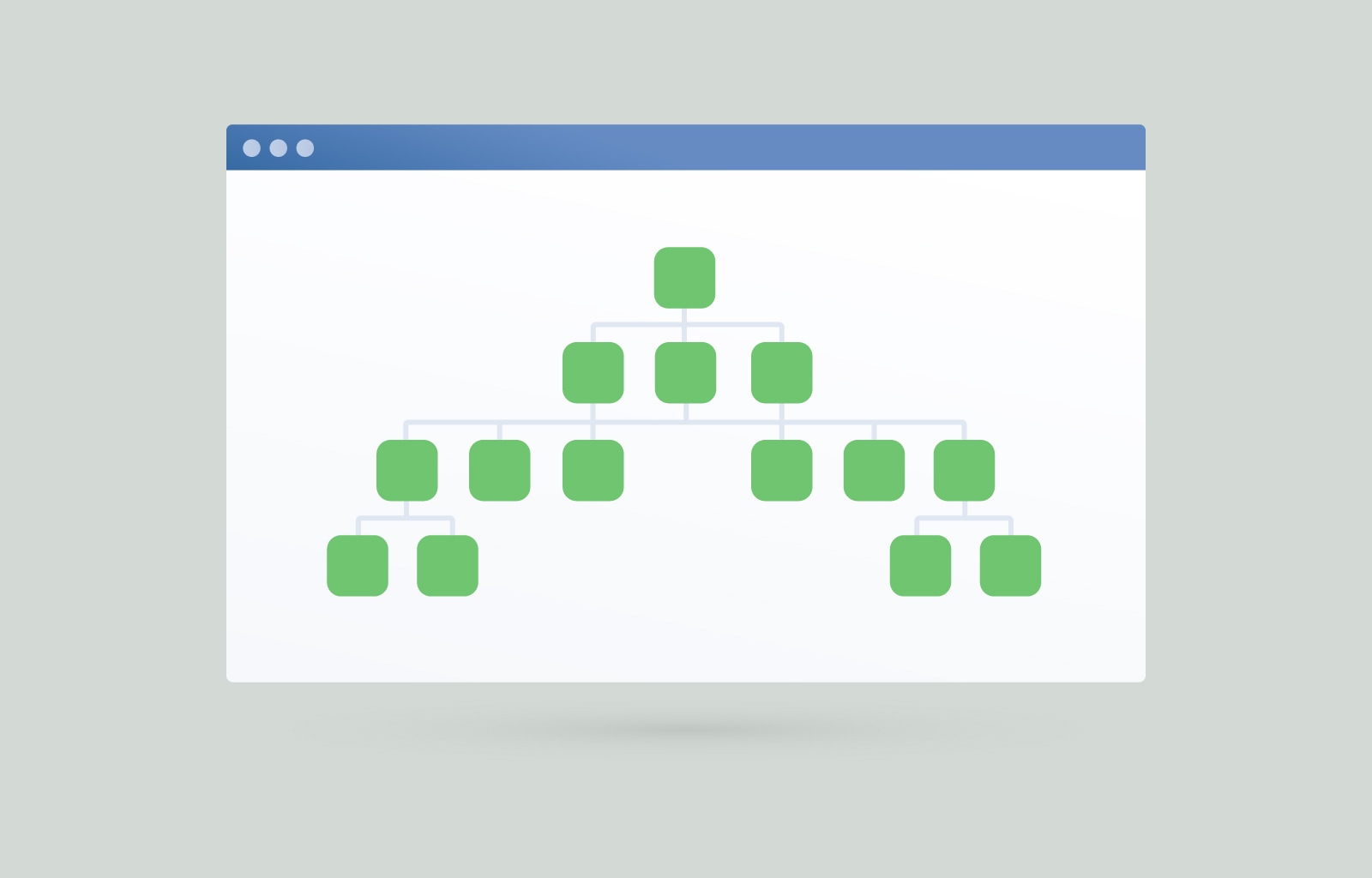How do search engines identify hierarchical site structure?
Search engines can identify hierarchical site structure using different signals. The most common are related to internal linking, URL structure, breadcrumbs schema, SiteNavigationElement schema, and „priority” field value for URLs in XML sitemaps.

Internal linking
Internal linking is crucial as it helps search engines understand the relationships and hierarchy between different pages on a website. By strategically placing links it’s possible to guide search engines through the site, highlighting the most important pages (e.g. linked from the header navigation or homepage). Certain categories can link only to related subcategories, etc..
This not only improves the crawlability of a website but also distributes internal page rank, enhancing the ranking potential of key pages. Effective internal linking can also improve user experience by making navigation easier, encouraging longer site visits, and reducing bounce rates.
URL structure
A well-organized URL structure provides information to search engines about the hierarchy of URLs and categories. URLs that reflect the logical structure of a website, such as including categories and subcategories, make it easier for search engines to prioritize, index and rank pages correctly. For example, a URL like
www.example.com/blog/seo-tips-2024 clearly indicates that the page is part of the blog section and is about “SEO tips for 2024”. Another example:
www.example.com/computers/desktop/dell shows that the page is inside category computers and subcategory desktop and also filtered by brand.
Another example is often implemented pagination with URL ending e.g. „/page/2”. This guides search engines that it is a subpage of the main category preventing ranking the pagination page on a higher position than the main category page.
By the way implementation of prev/next tags for pagination is no longer needed as John Mueller confirmed that Google is not using rel prev/next for a number of years (source).
Internal linking helps search engines understand the importance of the page within the context of the entire site. SEO-friendly and hierarchical URLs are also user friendly at the same time.
Breadcrumbs schema and internal links
Implementing a breadcrumbs schema is a good way to enhance a site’s hierarchical structure. By using structured data markup for breadcrumbs it’s possible to make this navigation trail even more explicit to search engines, which can then display it in search results (as the part of the URL field).
Breadcrumbs can be implemented only in schema markup however it’s recommended to show breadcrumbs also visually as internal links below site header. This not only improves SEO but also enhances the user experience by providing clear pathways through the site. Breadcrumbs provide a trail for users to navigate back to previous sections of the site.
Moreover while implementing breadcrumbs it’s good to meet WAI-ARIA standards because they are easily recognized and navigated by screen readers. Also adhering to WAI-ARIA standards ensures that breadcrumbs are fully navigable using a keyboard.
SiteNavigationElement schema
It’s possible to implement information about main menu items and submenu pages (e.g. from dropdown menu) within the SiteNavigationElement schema using the hasPart property. This property allows to nest navigation elements within other navigation elements, effectively creating a hierarchical structure that includes submenu pages.
XML sitemap – „priority” values for URLs
Including priority values in XML sitemap is a way to signal the relative importance of different pages to search engines. By assigning higher priority values to more important pages it’s possible to guide search engines to focus their crawling and indexing efforts on the content that matters most. It’s not a strong signal in comparison to internal links but can be particularly useful for large websites with extensive content, suggesting to crawlers that critical pages should be indexed more frequently and accurately. While it doesn’t guarantee higher rankings, it helps in maintaining a well-organized site that is easier for search engines to navigate and understand.
Content Silos
Search engines recognize when content is grouped into thematic sections or silos. This helps to clarify the structure and context of a site. For example, a “Blog” section might contain articles on specific topics, each article linked under appropriate headings or categories.
Summary
By analyzing these factors, search engines can piece together how a website is organized, how content is related, and which pages are the most important within the site’s hierarchy. A clear, logical site structure makes it easier for search engines to crawl, index, and rank content efficiently.



December 22, 2024 at 10:14 pm |
The whole breadcrumbs schema thing seems pretty useful. I guess having a clear path for users and search engines is more important than I thought. Plus, making it accessible with WAI-ARIA standards is a nice touch. Props to anyone who’s doing this right!